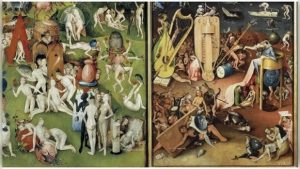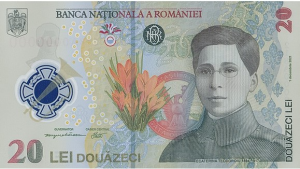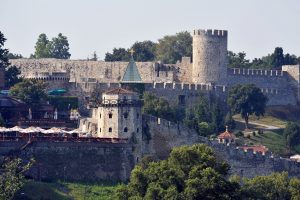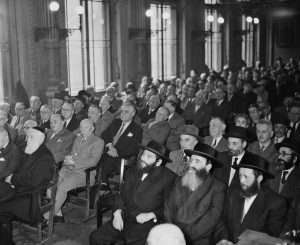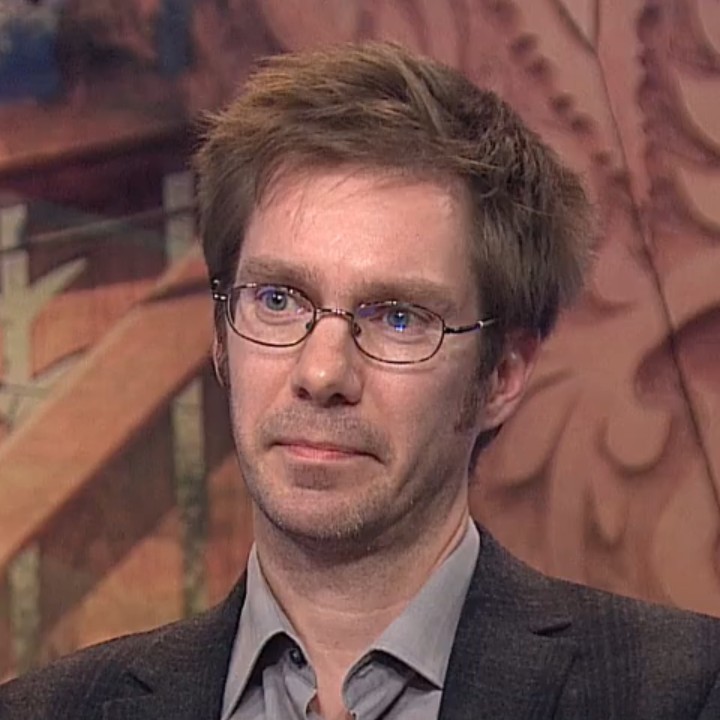Which monument connects Prague, Cluj-Napoca, Budapest and Sfântu Gheorghe?
There is a monument in Prague that, through its history and its replicas, can be seen as embodying the cultural unity of Central Europe, while also representing the territorial extent of the region. This work is the statue of St George the Dragon-Slayer, in the third courtyard of Prague Castle, next to the monumental St Vitus Cathedral.
True, the monument in the courtyard is a replica, but the medieval original is not far away: it is displayed in an exhibition on the history of Prague Castle in the old royal palace. The statue of St George, the patron saint of knights and particularly popular in medieval Europe, is an outstanding work of Hungarian (Transylvanian) Gothic art, which also shows early Renaissance influences from Italy. It may have been made in 1373 by Márton and György Kolozsvári but, apart from this basic information, not much is known about the work; as art historian Mária Prokopp has pointed out, this is only known from the Latin inscription on the shield of the figure of St George that was later lost. The sculptor brothers were probably commissioned by King Louis I (the Great) of Hungary (1342-1382) to create the statue, which was a gift to the court of Charles IV (the Luxembourg), Holy Roman Emperor and King of Bohemia (1346-1378) in Prague. (According to György Gaal, a literary historian based in Cluj (the Romanian name for Kolozsvár) and well-versed in local history, it is also possible that the Czech ruler invited the two sculptors to Prague to create the work.) The sculpture is mentioned in a Czech chronicle from the mid-16th century, which describes it as a fountain statue. “Later”, wrote archaeologist Árpád Buday in 1926, “the Hungarian origin of the statue, and even the statue itself, was forgotten. When it was rediscovered in the 1970s and praised again, it was proclaimed a German creation. It was Vilmos Wenrich who fought for the recognition of its Transylvanian origin.” Even after the Second World War, Czech art historians assumed that it was the work of local craftsmen, but Hungarian researchers have clearly proved that it was made by the Kolozsvári (“de Colosvar”) brothers, who were active in Oradea for decades in the 14th century.
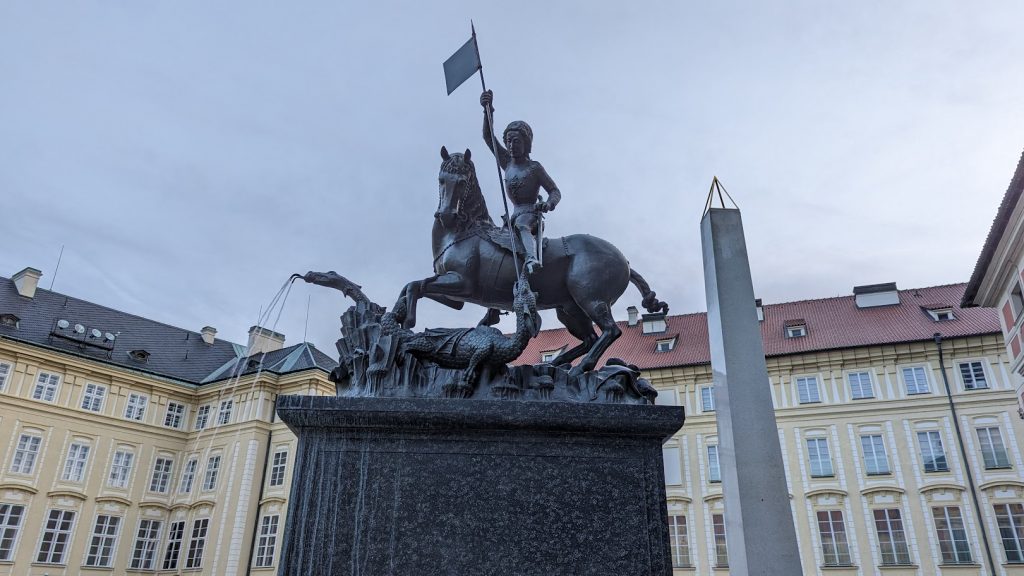
In addition to the copy in the courtyard of Prague Castle, the Czech Wikipedia knows of two other copies in the Czech capital, one in the stone vault of the National Museum and the other in the lobby of the Academy of Fine Arts. And the statue also has several other copies displayed in public spaces.
The most notable of these is probably the one in front of the Reformed Church in Mihail Kogălniceanu Street in Cluj Napoca. Although the city council had already decided to create a replica in Cluj in 1896, at the Hungarian Millennium Assembly, the matter was not progressed for a long time. However, at the turn of the century, Franz Joseph I had several plaster copies of the statue made in Prague, one of which was given to the Transylvanian Museum Association. “And when it was decided in Budapest that a bronze replica would be placed under the Fisherman’s Bastion, the people of Cluj again embraced the idea”, writes György Gaal. In Cluj Napoca, a “statue committee” was established; among the main promoters of erecting the monument were Béla Pósta, professor of archaeology, and former mayor Károly Haller, and fundraising was organised to cover the costs. The cast was finally made in the workshop of the Budapest based sculptor József Róna, and in September 1904, in the presence of Albert Berzeviczy, then Minister of Culture, the new work was unveiled in front of the Cluj University Library, in what is now Lucian Blaga Square (for a while the square also bore the name of St George). Albert Berzeviczy said in his speech that “Hungarian history may only be made fruitful for our future if we see and love the works of the peaceful spirit in it”, and that (…) “we will succeed in creating national art to the extent that we succeed in exploring the still existing memories of our artistic past.” reported Budapest Hírlap’s correspondent on the ceremony in Cluj.
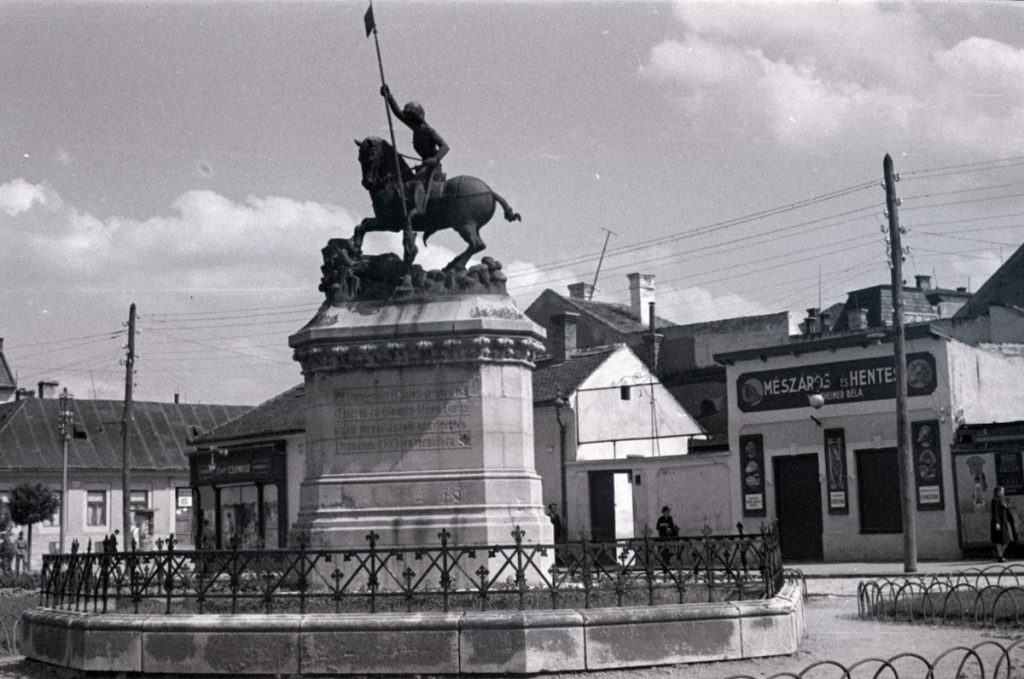
during the “little Hungarian world“ (Source: Fortepan / Zoltán Aszódi)
The statue in Cluj survived the wars and the various imperial and regime changes, although a Romanian inscription was added after Trianon, as reported by the Budapest Hírlap, interpreting the event in the context of the Hungarian-Romanian symbolic struggle: “The Romanian authorities are constantly working to remove from public view any relic of the Hungarian past. Most recently, they have got their hands on the famous statue of St George in Cluj, which was made by Hungarian sculptors Márton and Ferenc for the Hradčany in Prague. Yesterday, a plaque was nailed to the statue, with a Romanian text announcing to the uninformed but curious stranger that the statue was “made in Cluj by the brothers Martin and Francis.” It was moved to its current location on Farkas Street after the square was redesigned in 1960, and in 2013 it was restored on a civil society initiative, with the support of the Hungarian Ministry of Foreign Affairs.
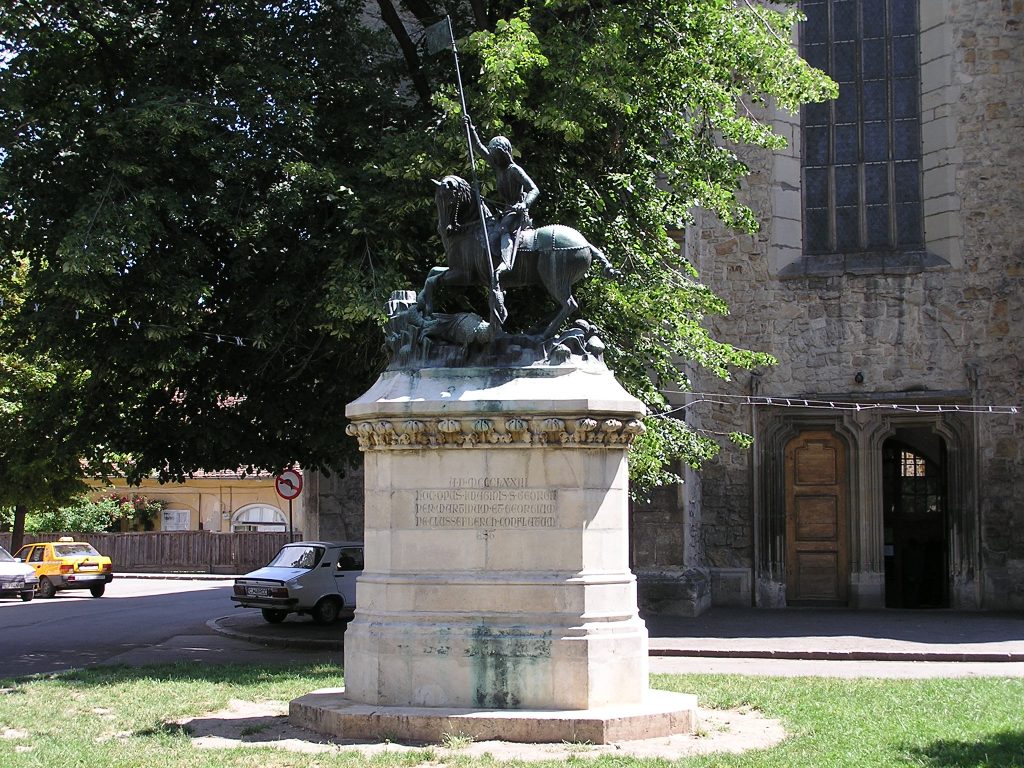
in its current location (2003, photo by the author)
One of the Budapest copies was erected in 1903 at one turn of the staircase leading to the Fisherman’s Bastion, and the other a few years later in the Epreskert statue park.
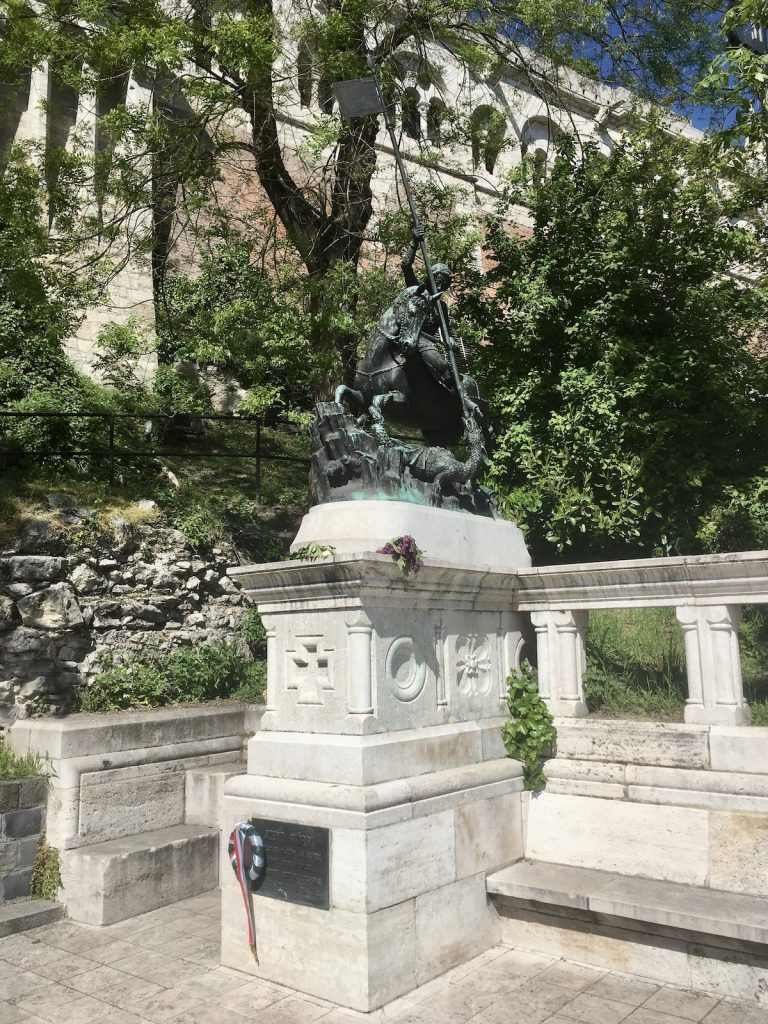
However, the latter was later placed in the Hungarian National Museum, and another copy was placed in the garden. Few people know about it, but a copy is on display in a building of the Budapest University of Technology.
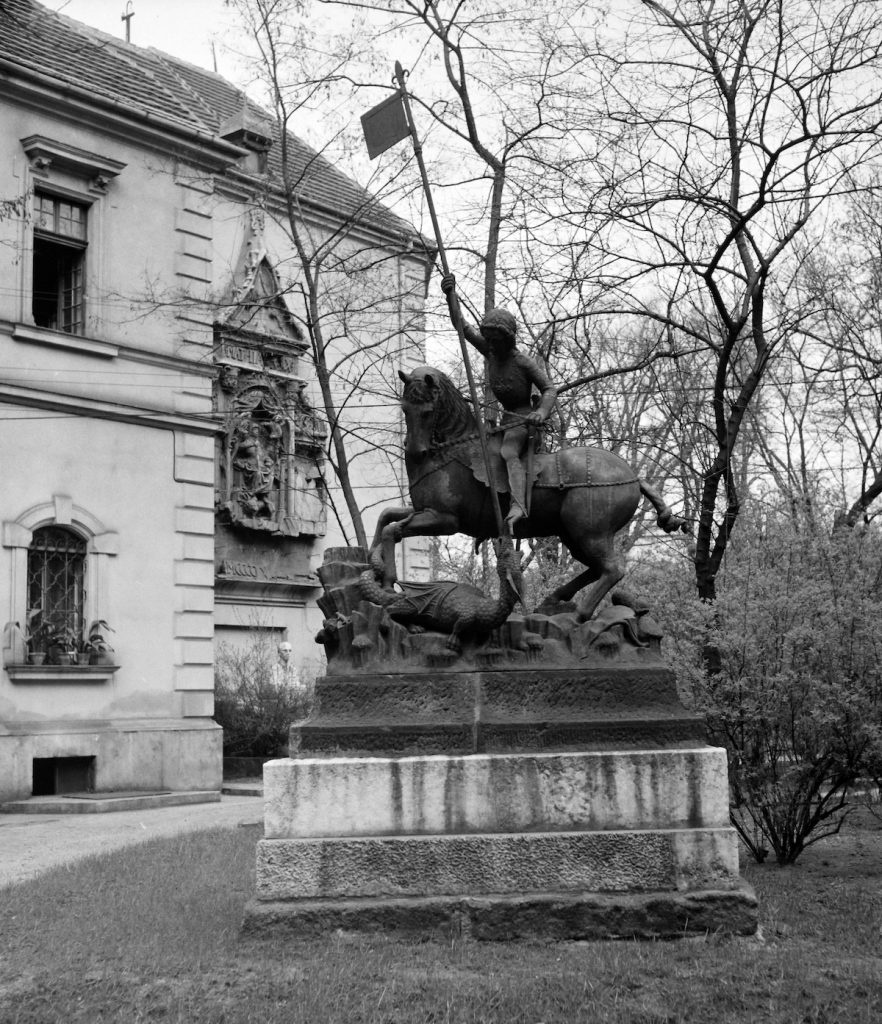
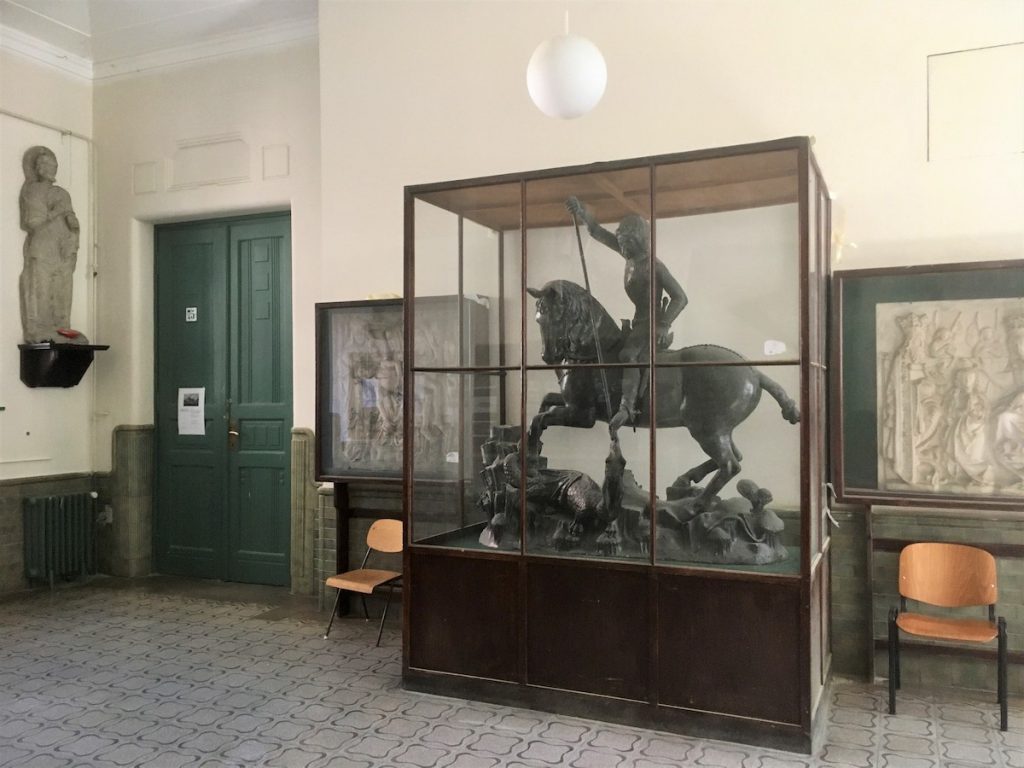
In Hungary, one can even see a copy of the work of the Kolozsvári brothers in Szeged. The statue was erected in the late 1930s in this Great Plain town, between the Piarist grammar school and the Institute of Chemistry , where the Ferenc József University of Sciences of Cluj found a new home after the annexation of Transylvania. It was relocated in 1959 and today stands on Béla Rerrich Square, next to the Dome Square.
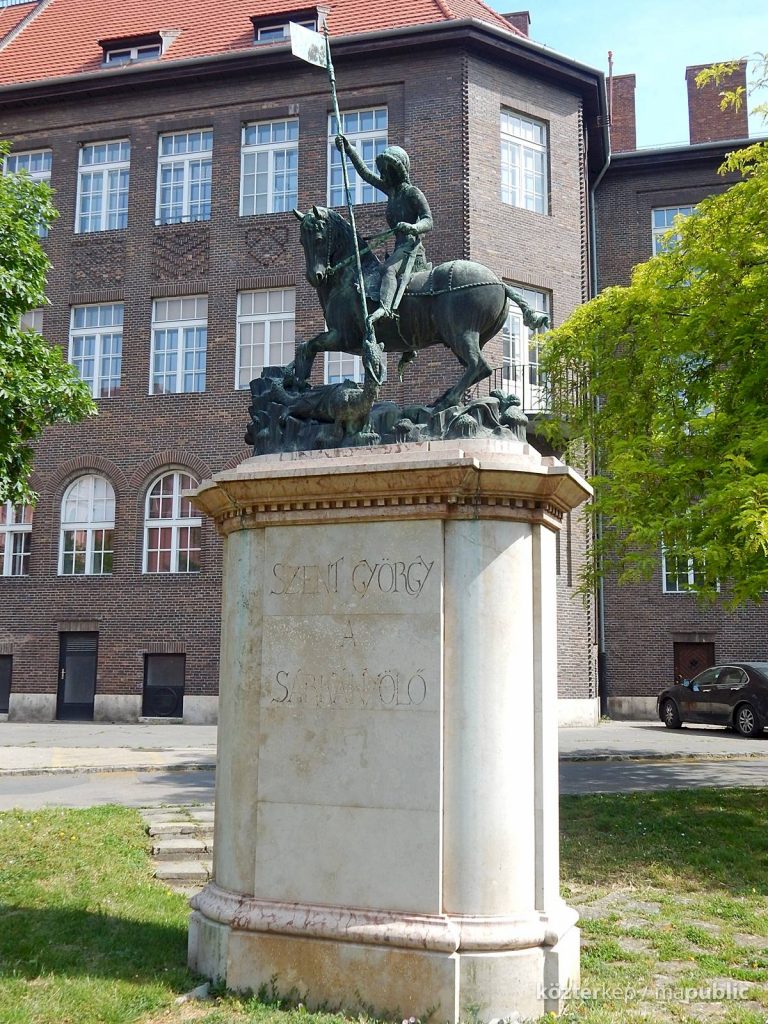
The latest replica of the statue of St George the Dragon-Slayer was also unveiled in Transylvania, more than ten years ago. In the centre of Sfântu Gheorghe in Szeklerland, a statue of St George had already been inaugurated in 2001, but after this controversial modern work, also called the “dinosaur”, a “classic” version was erected in the county capital in 2012.
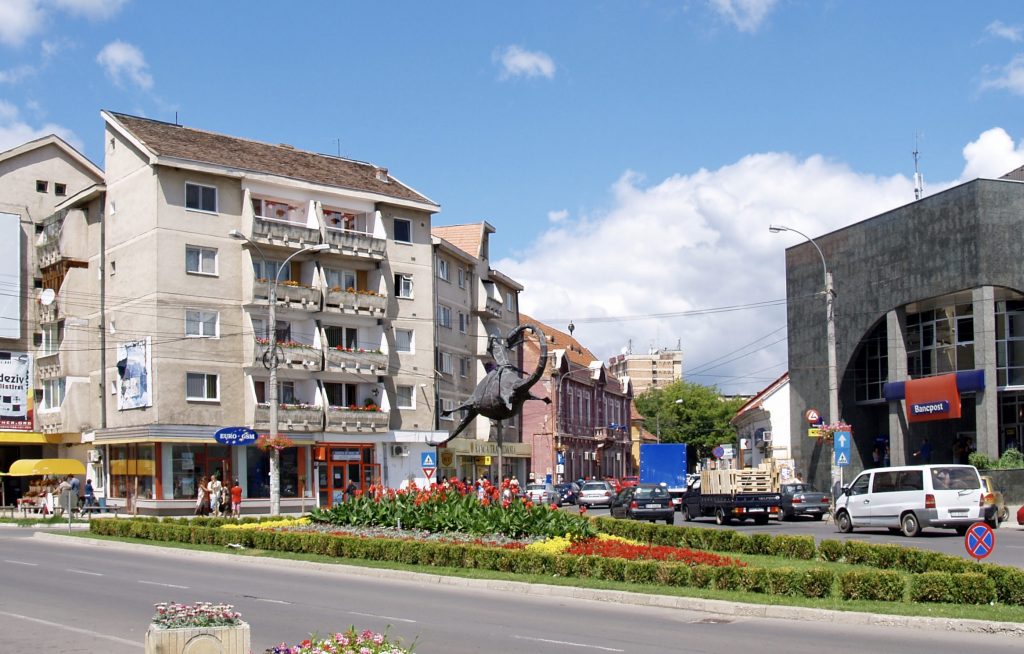
The new copy, made under the supervision of sculptor János Lestyán Goda at the Sculpture Department of the Hungarian University of Fine Arts, was inaugurated on 5 May 2012. In his speech, Mayor Árpád Antal, also recalling the patron saint of the city, emphasised that the new monument symbolises both the Szeklers’ attachment to their homeland and their will to fight for it: “we Szeklers have always worked with one hand and fought with the other, and it is no different today; there are still some who want to take our homeland.”
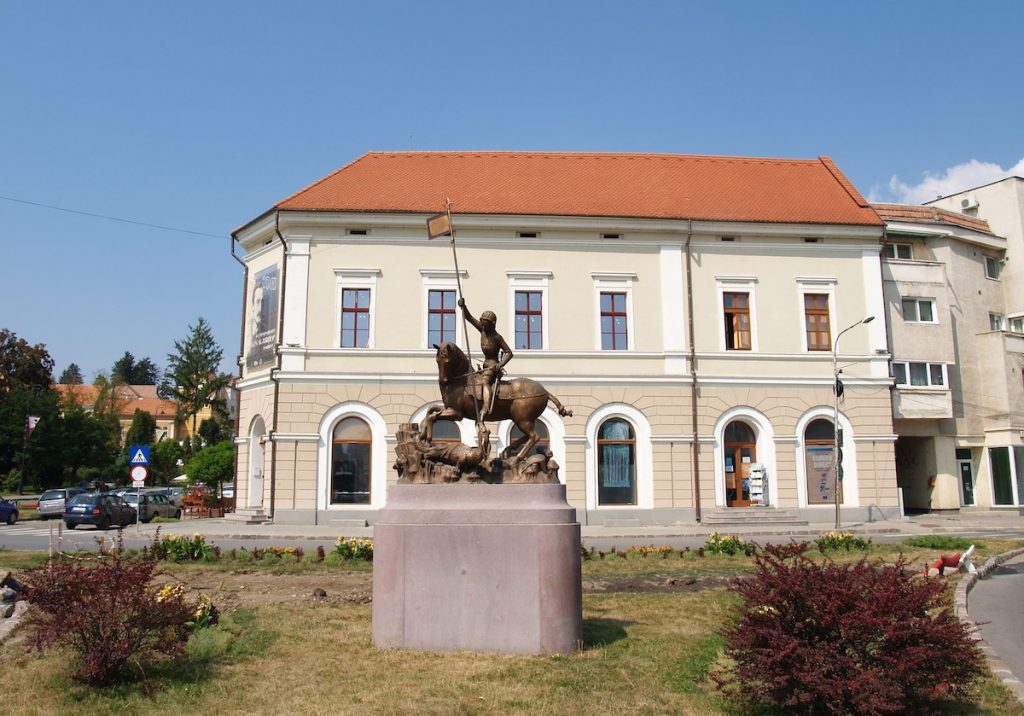
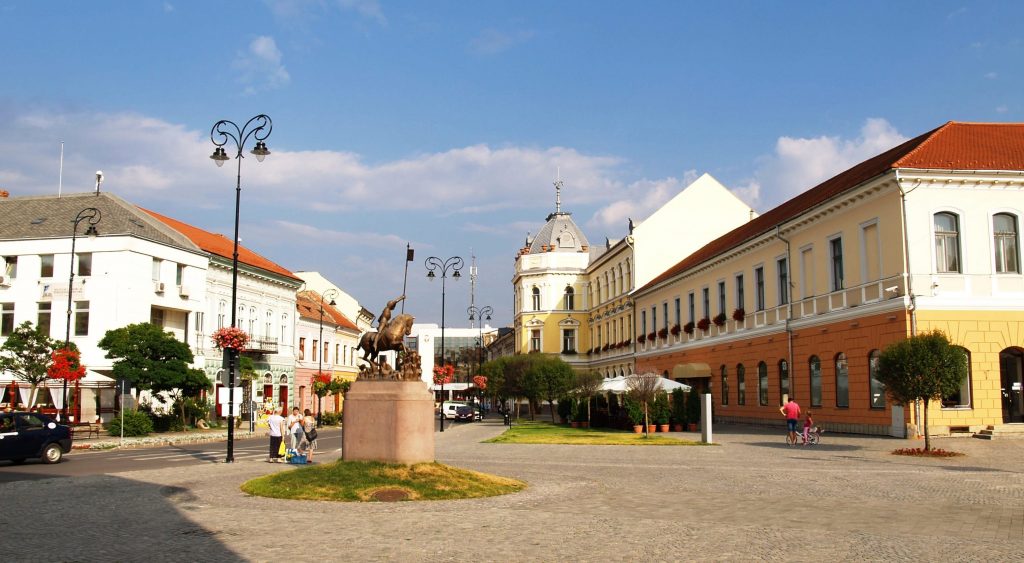
At the turn of the previous century, spreading replicas of the statue of St George took place still within a single state, the Austro-Hungarian Monarchy. Although less than two decades later these frames fell to pieces and the individual monuments are now in three different countries, the works, and more recent copies, still link Prague, Budapest, Szeged, Cluj-Napoca and Sfântu Gheorghe, drawing a map of Central Europe as a distinct region.
Literature
Prokopp Mária: Márton és György Sárkányölő Szent György-szobra: 1373. Korunk 2001/7 No 15-20.
Buday Árpád: Erdély művészettörténeti öröksége. In: Sas Péter (ed.): Ódon Erdély II. Művelődéstörténeti tanulmányok. Magvető Kiadó, Budapest, 1986. 449–488.
Gaal György: A Szent György-szobor és alkotói. 17 August 2013. Szabadság.ro
A kultuszminiszter Kolozsvárott. Budapesti Hírlap, 1 October 1904 3.
Kisebbségi sors. Budapesti Hírlap 4 February 1934. 12.
Váry O. Péter: Szent György-szobrot avatott Sepsiszentgyörgy. Háromszék 7 May 2012 1., 3.
Köztérkép.hu
Székelyhon.ro
Romániai magyar lexikon. Adatbank.ro
Cover photo: the monument in Prague Castle (photo by Tamás Zahorán)
